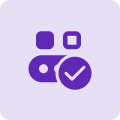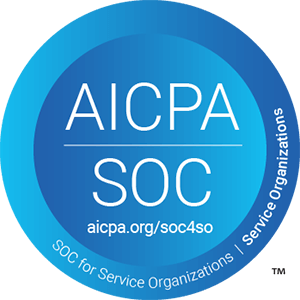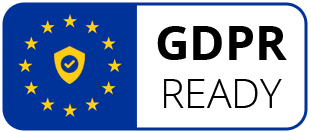The recruitment funnel plays a crucial role in your hiring success. For instance, when Rolls-Royce tweaked just one piece of its hiring process, something remarkable happened. Their candidate completion rate skyrocketed from 74% to 96% — all because they re-thought how their recruitment funnel worked.
So, if you’re thinking recruitment’s all about filling positions fast? Think again!
A solid recruitment funnel doesn’t just help you hire quickly; it helps you hire the right people who stay and grow with your company for the long haul.
Though optimizing the recruitment funnel is key to hiring the best talent, we understand that—balancing quality and efficiency can be tough. Let’s fix that with clear stages, metrics, and best practices for better optimization.
What is a Recruitment Funnel?
A recruitment funnel is a way to map out the hiring process step by step. It involves filtering and refining candidates over time.
Also read: Hiring Process Checklist: A Step-By-Step Guide
To put this right, at the top of the funnel, you attract many candidates through job ads, but as you move through stages like resume screening, interviews, and assessments, the pool gets smaller. You are left with your ideal hire by the time you reach the bottom.
With a funnel, you will know exactly where you stand and what’s eating your time – it focuses on zeroing in on the ones who truly shine.

Each stage in a recruitment funnel has a role, whether it’s grabbing attention with job posts or narrowing down choices during assessments.
Also, recruitment funnels spot delays. For example, if you notice a 70% dropout rate after the first interviews. It signals either your interview process is too lengthy, your job description doesn’t match reality, or your compensation discussion came too late.
| 💡Pro tip: Use automation for repetitive tasks like scheduling interviews or screening resumes. This frees up your time to focus on engaging with the best candidates. Use Peoplebox’s AI-powered resume screening feature to find top applicants in your ATS. |
Now, let’s break down the stages of a recruitment funnel and see how each step contributes to finding that perfect fit for your team.
Stages of a Recruitment Funnel
Glassdoor report says that, on average, you will receive 250 resumes for a job posting, out of which 4 to 6 will be called for an interview, and only one gets the job. Before you find that one perfect candidate, there are various stages to go through in a recruitment funnel.

Creating Awareness
Creating awareness is your chance to show candidates what makes your workplace special so your brand is at the top of their minds when they’re ready to move. You can think of it like an advertising stage of the recruitment funnel through mediums:
🎯 Start with social media. 79% of job seekers use social media to find jobs. Here’s how you can take your social media recruiting up a notch:
- Showcase what makes you unique.
- Give a sneak peek behind the scenes (add brainstorming sessions and office setup)
- Keep it light and fun. (Share fun facts about your team members or run interactive polls or challenges.)
👉 Here’s a look at Inspire Brands’ job posting. It informs candidates that they are hiring, shows them the perks of joining their team, and promotes their employer brand— all at once!
🎯 Leverage your ‘company website’. A strong, compelling “work with us” page isn’t just a place for job listings—it shows your work culture, values, and, most importantly, why it’s awesome to work with you. Employee testimonials are a great way to implement it. You can even add videos that show a “day in the life” at your office, which can help make your company feel more relatable and welcoming.
🎯 Conduct job fairs to put your name out there. Whether in-person or virtual, job fairs give you the chance to get face-to-face with people who may not have considered your company yet. It’s the perfect time to impress them and show them just what makes your business a great place to work.
🎯 Try tapping into affiliate marketing. Partner with industry influencers or platforms that align with your company’s vibe. This opens up your brand to a whole new audience that’s already tuned in to the kind of work you offer. If you’re looking to hire tech talent, for example, team up with a tech influencer to get the word out.
Attracting Prospects
While awareness builds your employer brand, the attraction stage is where you convert that interest into applications. Here’s how to make this phase a success:
☑️ Job descriptions that speak to people: This is where you can really win candidates over. A good job description shouldn’t be just a list of requirements—it should be an invitation to join something exciting. Highlight your company’s benefits, like ‘flexible hours’ or ‘collaborative, fun teams’ can make a huge impact.
☑️ Catchy job titles: First things first—make your job title stand out. Instead of just “Marketing Manager,” you could try “Creative Marketing Leader for a Growing Tech Company.” This helps the role feel more appealing, especially if it’s tied to the bigger picture.
👉 In 2019, Twitter put up a job posting with an interesting title, ‘Tweeter in Chief,’ when they basically wanted someone to run their official Twitter account. But a title like that calls for you to pause and pay attention, precisely the point.
☑️ Advertise in the right places: Posting on LinkedIn and your company’s career page is a solid start, but don’t forget to meet your candidates where they are! If you’re hiring for a tech role, consider niche job boards or even the tech communities on Twitter and Reddit.
Note: Beyond LinkedIn, consider advertising on platforms like AngelList for startups, Behance for creative roles, or Glassdoor for employer reviews. Additionally, industry-specific Slack channels or Facebook groups can be great places to reach passive candidates who may not be actively looking but could be intrigued by the right opportunity.
☑️ Be available for conversations: Once your job postings are open, be proactive. Answer questions about the role, your company, and your culture. Some candidates might hesitate to apply without getting more info, so make yourself available to chat through LinkedIn messages or even a quick phone call. The easier you make it for candidates to connect with you, the more likely they will take that next step.
Screening Candidates
The screening stage is where you start to narrow the funnel. In this stage, you sift through a pile of resumes to find the top-tier talent. Either do it manually or in the case of high-volume applications, it is good to use the Applicant Tracking System (ATS) for bulk filtering.
You can do this through:
- Scanning and scoring resumes: Use your ATS to compare resumes against job requirements. This will help you filter out candidates who don’t meet the basic criteria.
- Shortlisting: From there, you might want to go a step further and review the shortlisted candidates in more detail to find those who really stand out.
- Looking for extra effort: Candidates who go above and beyond—whether by reaching out or connecting with you directly—might be worth a closer look. It shows initiative!
- Maintaining clear communication: Keep candidates in the loop. Let them know where they stand and if they’ve moved on to the next stage.
- Selecting for interviews: This is when you decide who will make it to the interview stage.
💡Quick tip
Set a standard for what’s a dealbreaker and what’s a bonus on the resume. This consistency helps you stay objective and focused as you evaluate candidates. It also keeps the process fair, ensuring you’re not swayed by hiring bias.
Interviewing
Once you’ve completed your pre-employment screening and narrowed down your candidates, it’s time for the interview stage. This is where you really get to know the candidates—not just their skills but whether they’ll mesh with your team and add value to your company culture.
Approach it effectively:
- Use your pre-screening results: Spot a gap in skills? Ask, “How do you plan to improve in this area?” It’s a great way to understand self-improvement.
- Is this person a team player? 81% of hiring managers believe that candidates who align with the company culture are more likely to remain with the organization long-term. So, beyond the role, consider how they would gel with your team based on their collaboration and conflict resolution history.
- Make your questions count: Don’t ask generic questions. Tailor your discussions to what matters most for the job, whether it’s creativity or problem-solving.
- Score with purpose: Use a clear system to evaluate candidates on key areas like skills, communication, and team fit. This keeps decisions fair and aligned.
Hiring
The final stage of your recruitment funnel is offering the job—this is where you seal the deal. You’ve guided the candidate this far, but it’s not time to relax just yet. This step is crucial to ensure they choose you over other offers.
Ace this last stage with finesse:
- Deliver a clear, exciting offer: Show them why they’re the perfect match.
- No surprises: Stick to what was discussed or negotiate fairly.
- Wrap-up background checks: Keep it smooth and timely.
- Make them feel wanted: Highlight their standout qualities.
- Start onboarding fast: Don’t leave them waiting—set the tone early.
💡Pro tip
Always keep a recruitment pipeline ready. Even when you’re not hiring, build connections with potential candidates through networking events, LinkedIn, or talent pools. When a position opens, you’ll already have strong leads to fast-track the process.
Key Metrics to Track in the Recruitment Funnel
Tracking key metrics in your recruitment funnel is key in each stage to spot bottlenecks, streamline your process, and hire faster.
| Metric | Explanation | Industry Benchmark | Formula |
|---|---|---|---|
| Time to Fill | Tracks how long it takes to hire a candidate, from posting the job to the offer acceptance. | 44 days (varies by industry) | No. of days all job positions remain open / Total number of open positions. |
| Source of Hire | Tracks the channels that bring in candidates, such as job boards and social media. | Varies by industry | (Hires from a source ÷ Total hires) × 100 |
| Interview-to-Offer Ratio | Measures the number of interviews needed to hire one candidate. | 2:1 | Total number of interviews / Total number of offers made |
| Offer Acceptance Rate (OAR) | Calculates the percentage of offers accepted by candidates. | Aim for values higher than 90% | (No. of accepted offers / Number of offers made) x 100. |
Tips to Optimize Your Recruitment Funnel
Optimizing your recruitment funnel doesn’t have to be complicated; it’s simply making small adjustments to improve how you hire and make the process smoother for everyone. Here are some easy tips to help you do just that.
📊 Keep Track of Key Metrics
Start by keeping tabs on your metrics. Tracking the Time to Fill, Source of Hire, and Offer Acceptance Rate can help you see where your process might need a tweak. If you’re taking a long time to fill positions, maybe you need to speed up your interviews or streamline your candidate screening.
🤝 Involve Stakeholders
Make sure everyone involved in hiring—your HR team, managers, and team leads—is aligned. When everyone knows exactly what they’re looking for in a candidate, the process speeds up and becomes smoother.
Suggested Read: How to Align Teams Using OKRs: 5 Easy Tips
Conduct regular check-ins with hiring managers and team leads to ensure you’re all aligned on what’s needed. This helps streamline the process and ensures you’re hiring the right fit for the team.
💻 Invest in Technology
68% of recruiters consider investing in new recruitment technology to be the most effective strategy for improving hiring results. You can use various technologies to save time and have an efficient recruitment funnel including:
- Automated Tracking Systems (ATS)
- Chatbots and conversational AI
- Candidate assessment tools
- AI-driven recruitment software
You can leverage these tools in various hiring features like talent pool nurturing, predictive analytics, interview scheduling, candidate communication and more.
🌐 Strengthen Your Online Presence
Job seekers love companies with a good online reputation. In fact, 75% of candidates consider the employer’s brand before they even apply for the job. Make sure your careers page is up-to-date, your social media is active, and that you’re getting positive reviews on job boards like Glassdoor. When candidates see that your company is a great place to work, they’re more likely to apply.
🔄 Monitor and Adjust Strategies
The recruitment funnel isn’t something you set and forget. Continuous monitoring and adjusting strategies based on what’s working (and what isn’t) is important. Regularly check your metrics, listen to feedback from candidates and hiring teams, and refine your approach as needed.
Example: A company may notice that its candidate pool is narrowing too early in the funnel. Adjusting the pre-screening criteria or expanding sourcing methods could help widen that pool again.
Summing Up
The tips we covered are great starting points, but putting them into practice? That’s where Peoplebox comes in.
We keep things simple but effective. Our platform helps you with:
✔️Multi-Source Candidate Analysis: We look at the whole picture – pulling in details from LinkedIn, Crunchbase, and other sources to help you understand each candidate better.
✔️Advanced Culture-Fit Algorithms: Skills matter, but so does fitting in with your team. We help you spot candidates who’ll work well with your company’s style and values.
✔️End-to-End Process Automation: Handle the paperwork and basic screening automatically so you can focus on actually talking to promising candidates.
Join the the 500+ companies that have made hiring easier with Peoplebox like Razorpay, Redbus, Whatfix, or Hackerrank. These teams are growing faster and smarter with people who stick around and make a real difference.
Want to see it in action? Request a demo and discover how Peoplebox can help you find, nurture, and retain top talent!
Frequently Asked Questions
1.What is a funnel in recruitment?
A recruitment funnel is a structure for specifying the hiring process. From the moment you put your job description until your candidate signs an offer letter, the funnel encompasses the talent acquisition process.
2. What are the key stages of a recruitment funnel?
A recruitment funnel typically has five key stages: 1) Creating Awareness, where you generate interest in your employer brand; 2) Attracting Prospects, where you convert interest into applications; 3) Screening Candidates, where you evaluate resumes and shortlist top talent; 4) Interviewing, where you assess candidates’ fit for the role and culture; and 5) Hiring, where you extend an offer to the chosen candidate and onboard them.
3. How can I improve the candidate experience in the recruitment funnel?
Improving candidate experience starts with clear communication, timely responses, and providing transparency at each stage. For example, send acknowledgment emails, provide feedback after interviews, and keep candidates informed about their status. A positive experience keeps top talent engaged and more likely to accept offers.
4. How can I measure the effectiveness of my recruitment funnel?
Track key metrics such as Time to Fill, Source of Hire, Interview-to-Offer Ratio, and Offer Acceptance Rate. These metrics help you spot bottlenecks, adjust your approach, and optimize your hiring process for better results.
5. How can I reduce dropout rates at different stages of the recruitment funnel?
High dropout rates often indicate issues like unrealistic job descriptions, misalignment of expectations, or lengthy interview processes. To reduce dropouts, align job descriptions with actual responsibilities, keep the process clear and efficient, and ensure candidates are aware of your company’s culture and benefits early on.
6. How to build a recruiting funnel?
A recruitment funnel should ideally begin by attracting as many applicants as possible and then narrowing them down. Brand awareness comes first at the top of the funnel; the new hire comes at the base. A recruiting funnel template helps you to track your development by breaking down the hiring process.
7. What is the Top of the Funnel (TOFU) in Recruitment?
The top of the funnel (TOFU) in recruitment is focused on attracting a large pool of candidates through job ads, employer branding, and content marketing to create awareness about your company.
8. How Can You Nurture Candidates in the Middle of the Funnel (MOFU)?
In the middle of the funnel (MOFU), you engage and qualify candidates by providing more role details, addressing questions, and evaluating skills and cultural fit to move them forward.
9. What is the Bottom of the Funnel (BOFU) in Recruitment?
The bottom of the funnel (BOFU) is the final stage where you make the hiring decision and convert top candidates into hires with a compelling offer and a smooth recruitment process.







